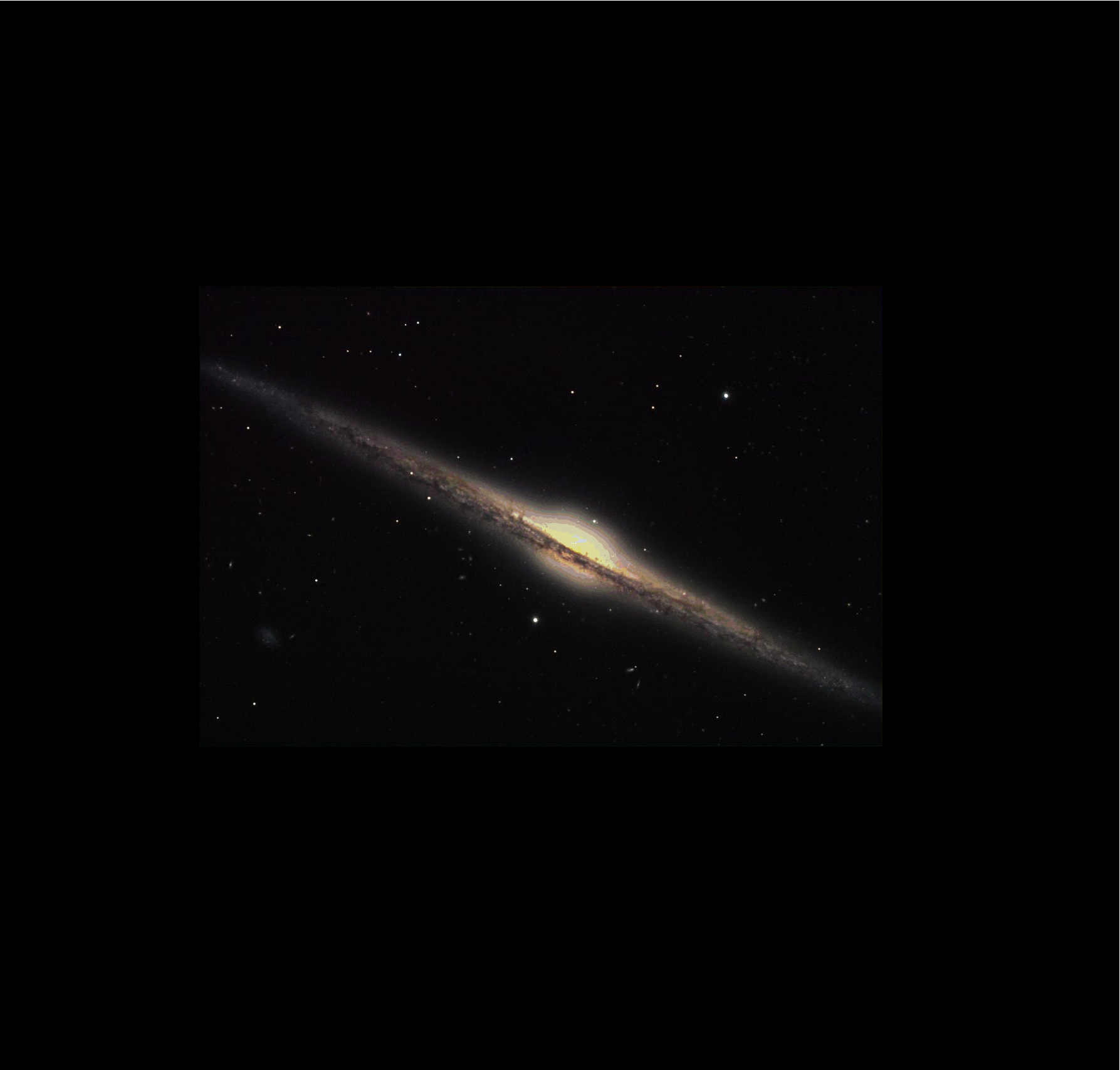
 Copyright © Michael Richmond.
This work is licensed under a Creative Commons License.
Copyright © Michael Richmond.
This work is licensed under a Creative Commons License.
The Milky Way can be broken into four structural components:
Some spiral galaxies have very prominent bulges:
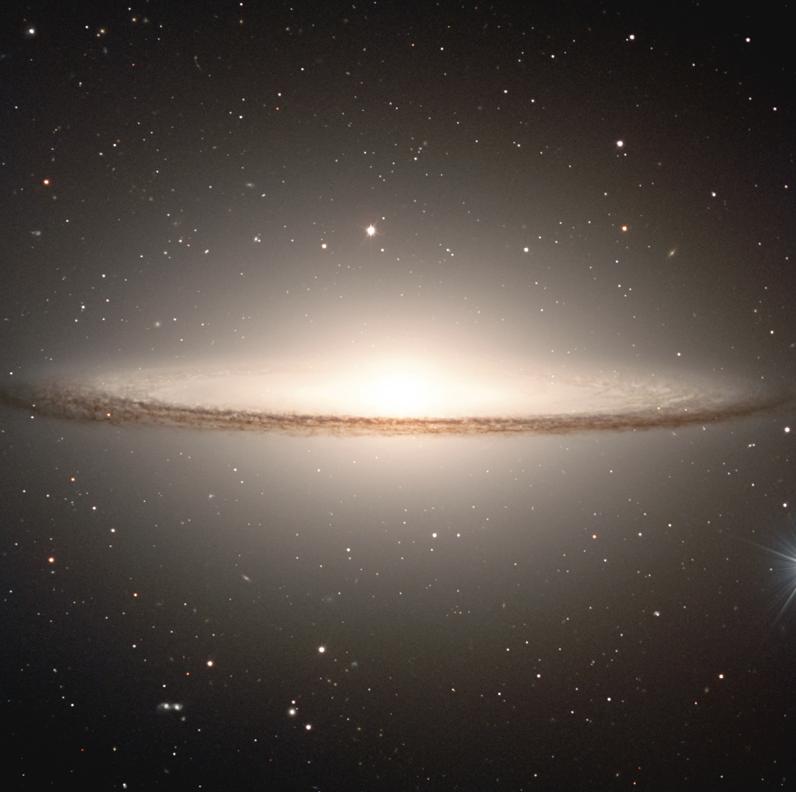
Other galaxies have tiny bulges which hardly stick up out of the disk:

Brad Ehrhorn/Adam Block/NOAO/AURA/NSF
The bulge at the center of our galaxy lies somewhere in the middle:
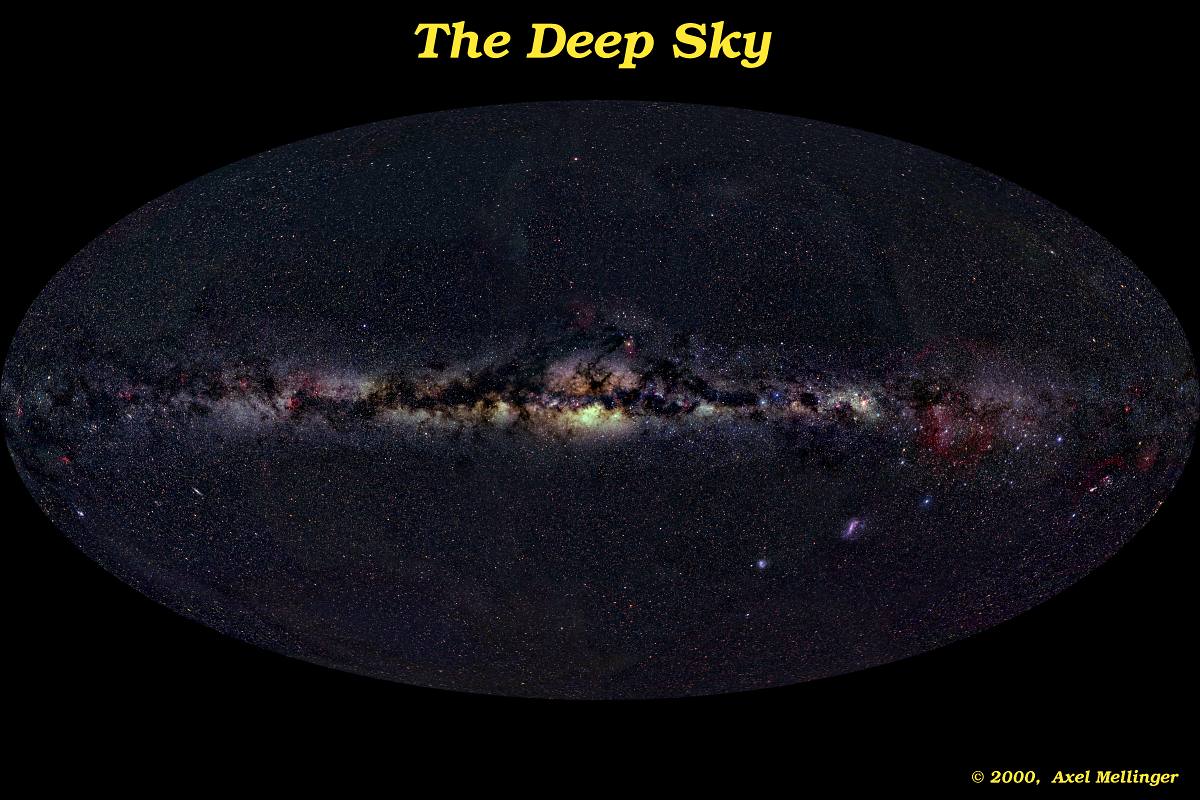
Image courtesy of Axel Mellinger and
Astronomy Picture of the Day for 2001 Feb 2
The bulge contains mostly reddish stars. Many of them are relatively old -- ten billion years or more. At the very center of the bulge is a supermassive black hole, but it doesn't have much of an effect outside of its immediate vicinity.
The disk of our galaxy is very thin, about 100 times wider than its own height. It contains almost all the gas and dust in our galaxy, as well as all the hot young stars and regions of star formation.
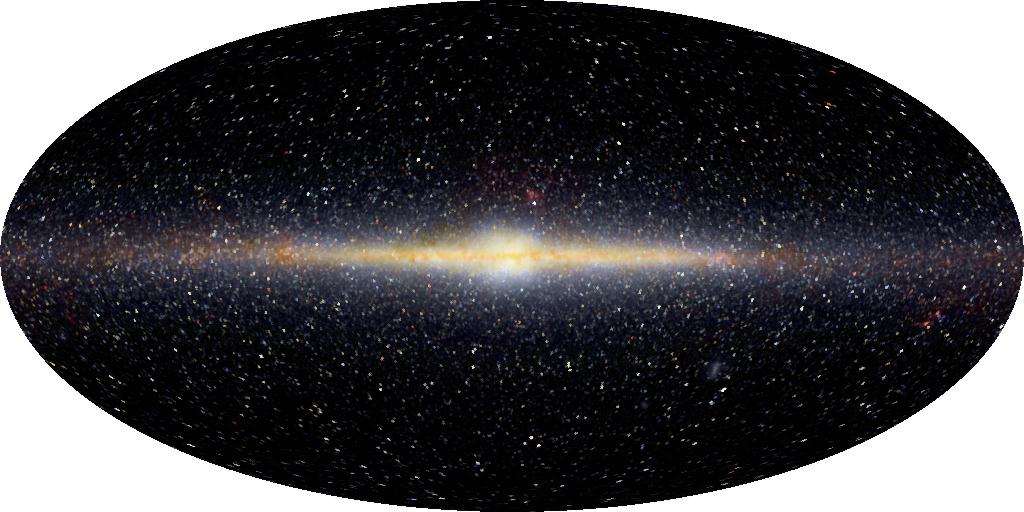
Seen from above, the disk shows spiral arms containing most of the cool, dense portions of the ISM. This is really a picture of M101, but it probably resembles our galaxy quite closely.
Far above the plane of the disk, we find hundreds of globular clusters:
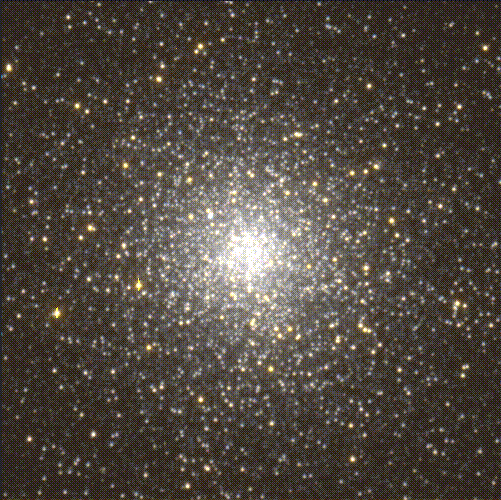
The stars in globular clusters are very old, dating back more than ten billion years, and also very poor in heavy elements.
You can see how globular clusters define a large region around the visible portion of a galaxy in the pictures below of the Sombrero Galaxy. The X-ray image (shown in blue) shows the location of binary stars with neutron stars or black holes, which often occur in globular clusters.
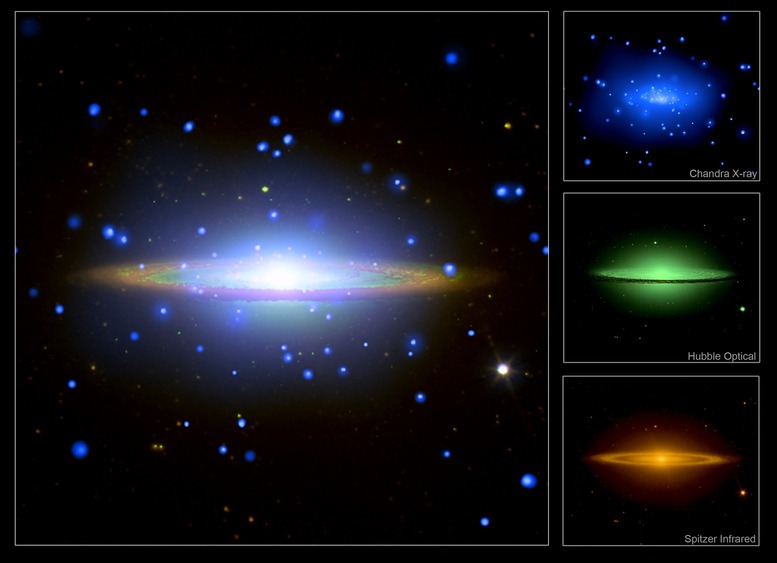
Images courtesy of
X-ray: NASA/UMass/Q.D.Wang et al.; Optical: NASA/STScI/AURA/Hubble Heritage; Infrared: NASA/JPL-Caltech/Univ. AZ/R.Kennicutt/SINGS Team and the Chandra archive.
We also find millions of individual stars in this spherical halo. Most of them are also extremely old, like stars in globular clusters, and also metal-poor. The stellar halo extends much farther from the center of our galaxy than the visible disk. It's hard to see in the Milky Way, so consider the halo of the Andromeda Galaxy, another spiral galaxy.
You can clearly see the bulge and disk of the Andromeda Galaxy in the picture below. Far off to one side, an ordinary picture shows nothing but foreground stars in our own Milky Way ...
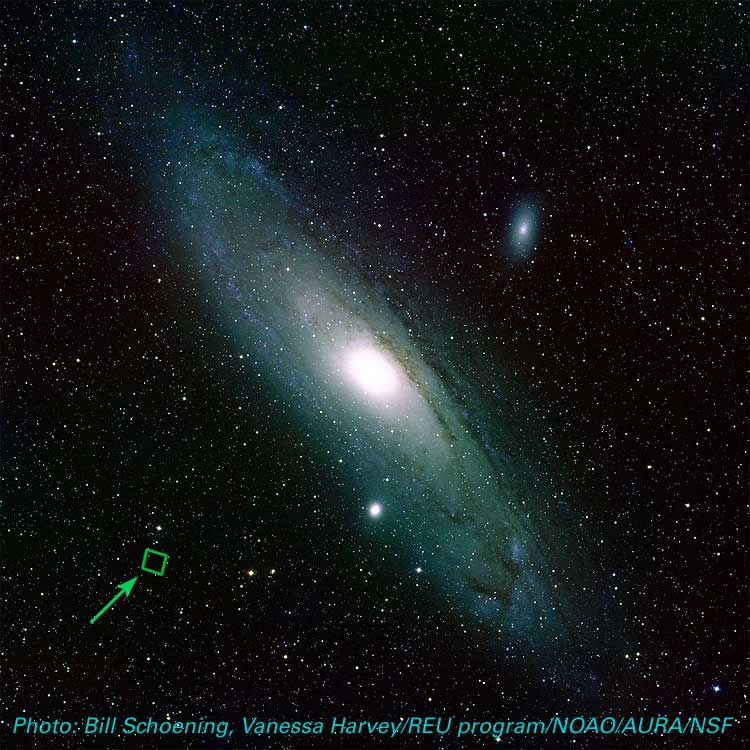
But recent very deep images taken by HST show thousands and thousands of stars which belong to the halo of M31 (as well as galaxies far far beyond all the stars).
What kind of stars live in the halo of M31 (and our own galaxy)? We can make an HR diagram to find out. The diagram below is slightly different from the ones in your book -- it uses filters V and I to create a (V-I) color, instead of using B and V to define a (B-V) color. But the idea is the same, and you can pick out the same features: main sequence, turnoff point, red giant branch.
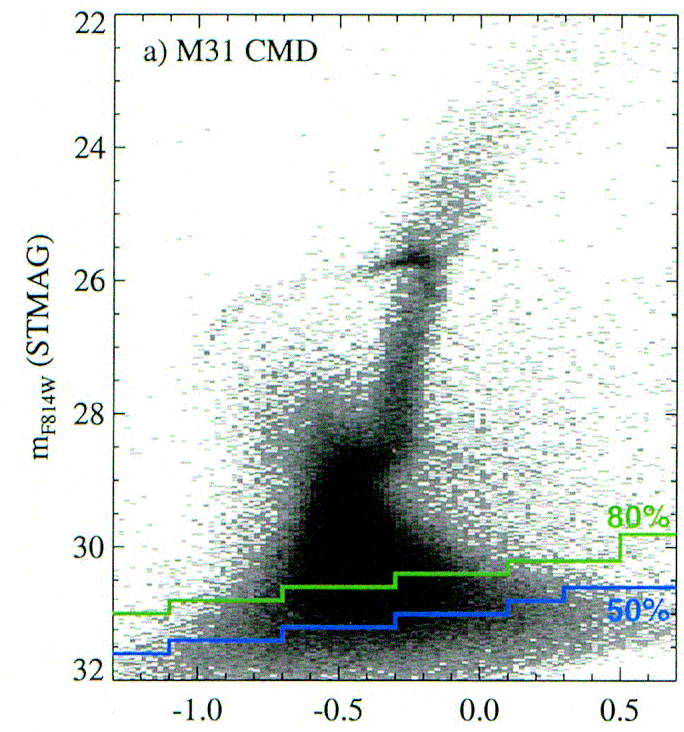
Q: Compare the observed HR diagram to the provided model HR diagram. How old are the stars in M31's halo? What is the difference between observed mag and absolute mag? How much fainter are the observed stars, compared to the model stars? The model stars are at a distance of 10 pc; how far away are the stars in M31's halo?
We also believe that our galaxy is surrounded by an enormous spherical cloud of dark matter: material which is not composed of ordinary protons, electrons and neutrons, but of some other sort of elementary particles. As its name indicates, this material doesn't emit much light; at least, not as much light per kilogram as stars do.
Why do we believe in this mysterious material? Two main reasons:
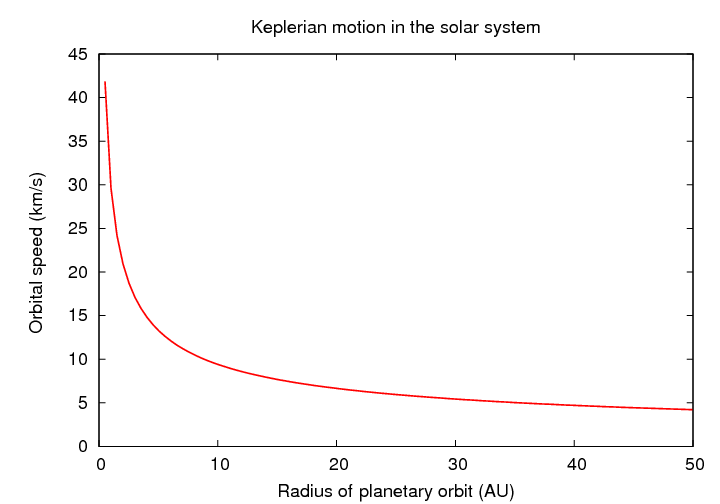
But when we look at stars and gas in the disk of the Milky Way, we find that their orbital speed does NOT decrease with distance from the center:
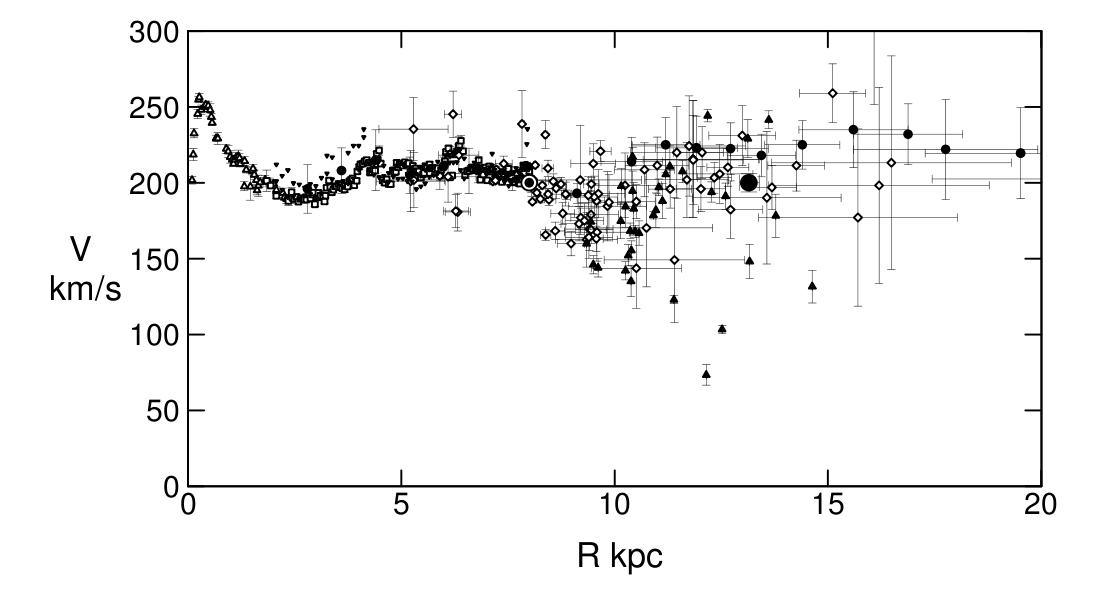
Figure taken from
Sofue, Honma and Omodaka, PASJ 61, 227 (2009)
Most of the light of our galaxy is concentrated at the center; if most of the MASS were concentrated there, too, then the gravitational force on stars far from the center would be small, and the rotation speed would decrease pretty quickly. But it doesn't.
We see the same sort of flat rotation curves in other galaxies, too, which supports the notion that there is some mass in galaxies which doesn't follow the distribution of light.

Figure from Rubin et al. (1980); reference provided at end.
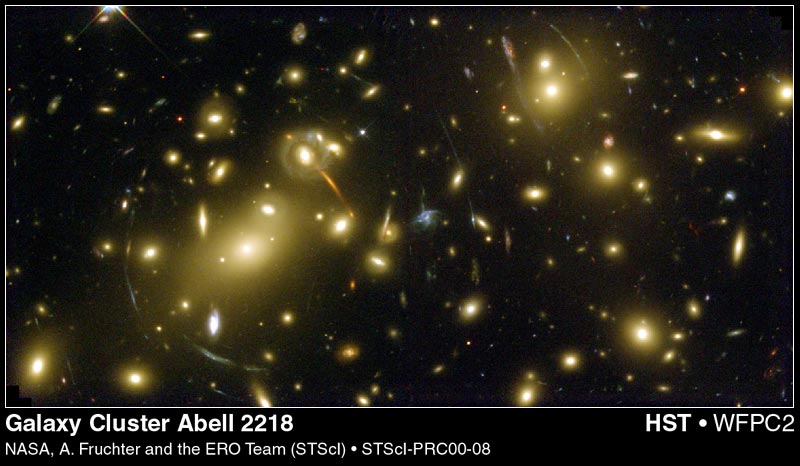
The long, thin arcs are actually images of galaxies far behind the main cluster; the light rays from them have been bent by the strong gravitational field of matter in the cluster.
If we add up all the mass due to stars we can see in these clusters, we find that it isn't enough to account for the strong lensing. It is necessary to add extra matter, spread out farther than the light in each galaxy, in order to reproduce the observed lensing.
For example, here is a picture of the cluster again, showing the amount of LIGHT at each position. (I've rotated the image by 180 degrees for consistency with the following figures)
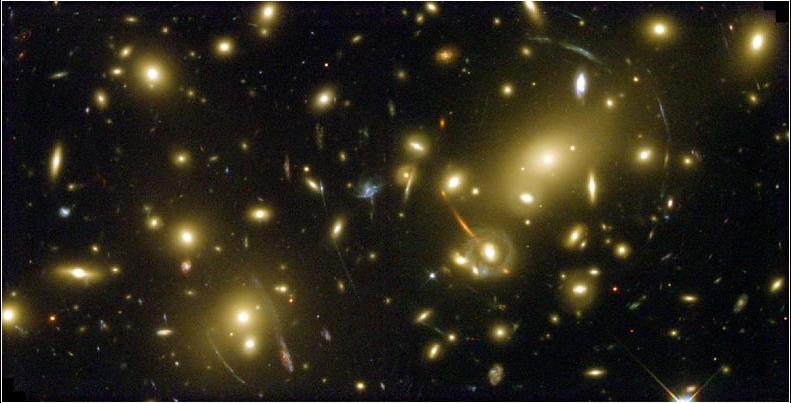
The distribution of MASS, on the other hand, can be determined by looking at the arcs; they are created by the gravitational pull of matter in the cluster on light passing through it from background galaxies. The distribution of MASS looks a bit different:
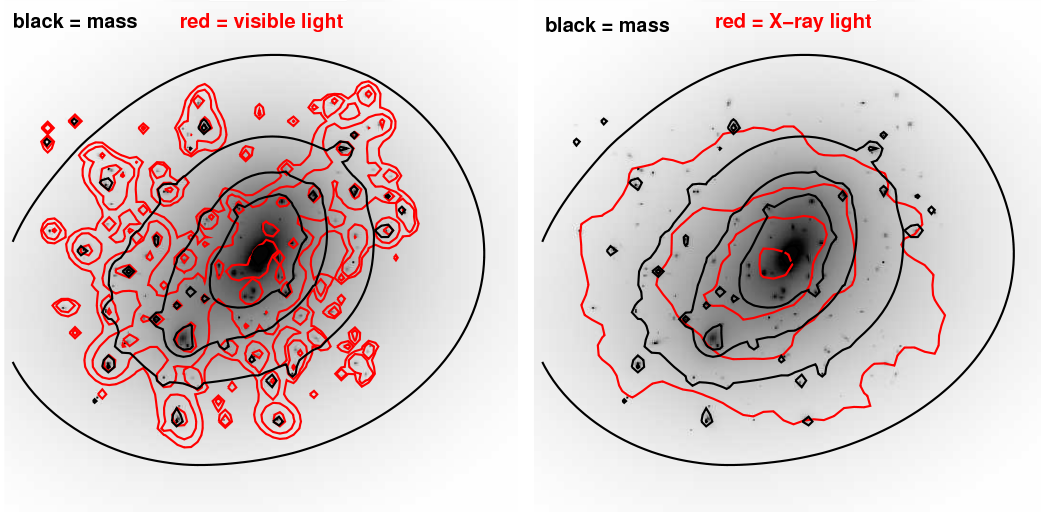
Image taken from
Eliasdottir et al., arXiv:0710.5636 (2007)
Most importantly, if we include only as much mass as the visible starlight would indicate, there is not enough gravitational pull to form the long, thin arcs. We need to include extra mass -- DARK MATTER.
In the case of our Milky Way Galaxy, we can see about 200 billion solar luminosities worth of light. If the Milky Way were made of ordinary stars like the Sun, we would expect it to have roughly 20 billion solar masses of material. Yet the actual mass of the Milky Way, based on the gravitational forces on gas and stars in its outer reaches, is roughly 100 times larger: about 2,000 billion solar masses.
In other words, the great majority -- perhaps 90 percent! -- of the mass in our galaxy must be some extra-ordinary stuff: dark matter. What is it? We just don't know.
 Copyright © Michael Richmond.
This work is licensed under a Creative Commons License.
Copyright © Michael Richmond.
This work is licensed under a Creative Commons License.